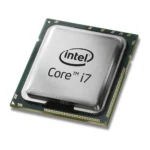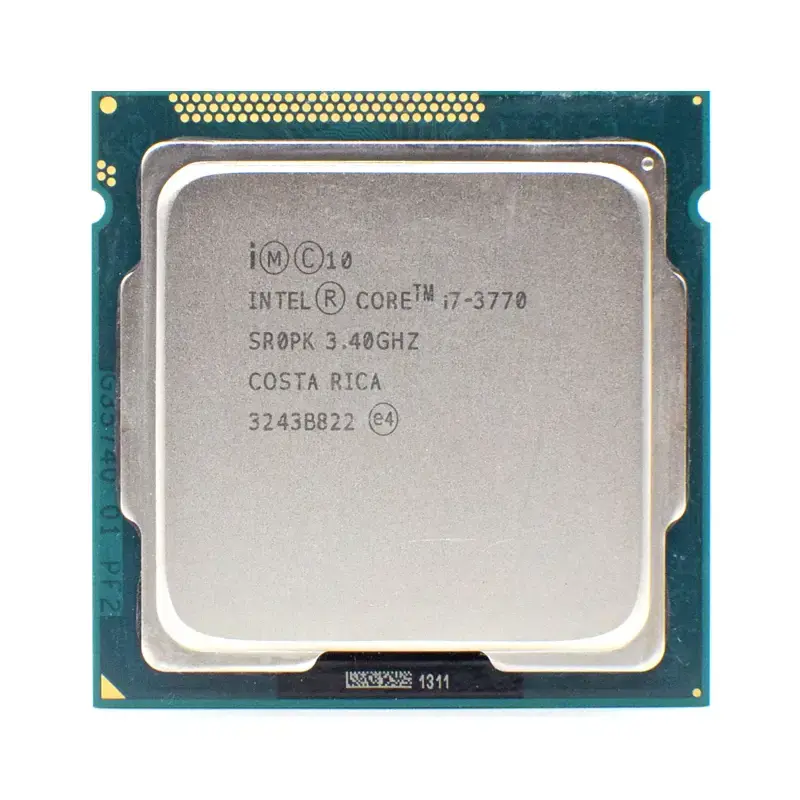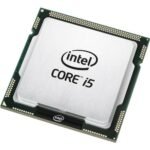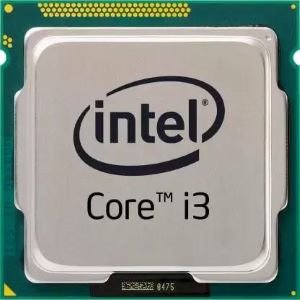Description
Intel I7 3rd Generation Processor Feature :
Intel i7 3rd generation processors, codenamed Ivy Bridge, marked a significant milestone in the evolution of computing technology. Launched in 2012, these processors represented a revolution in terms of performance, energy efficiency, and integrated graphics capabilities. The Intel I7 3rd Generation processors brought forth a plethora of innovative features and enhancements that reshaped the computing landscape. In this detailed exploration, we will delve into the key features, technical specifications, real-world performance, and the enduring legacy of the Intel Core i7 3rd generation processors.
Technological Advancements
1. 22nm Manufacturing Process:
One of the most notable advancements with the Intel I7 3rd Generation processors was the transition to a 22nm manufacturing process. This reduction in transistor size allowed for increased energy efficiency, improved thermal performance, and the ability to pack more transistors onto the same-sized silicon die, leading to enhanced processing power.
2. Ivy Bridge Architecture:
The Ivy Bridge architecture introduced several architectural improvements, including a larger L3 cache, enhanced branch prediction, and improved execution units. These enhancements resulted in a significant boost in overall processor performance, allowing for faster and more efficient processing of tasks.
3. Integrated Graphics:
The Intel I7 3rd Generation processors featured Intel HD Graphics 4000, an integrated graphics solution that delivered notable improvements in graphical performance. While discrete graphics cards remained essential for high-end gaming, the integrated graphics were capable of handling everyday multimedia tasks and light gaming, providing users with a more versatile computing experience.
4. PCI Express 3.0 Support:
Ivy Bridge processors introduced support for PCI Express 3.0, doubling the bandwidth compared to the previous generation. This improvement in data transfer speeds benefited graphics cards, storage devices, and other peripherals, allowing for faster and more responsive system performance.
5. Low-Power Variants:
Intel I7 3rd Generation processors included low-power variants that targeted ultrabooks and other portable devices. These processors maintained impressive performance levels while significantly reducing power consumption, enabling the development of thin and lightweight laptops with extended battery life.
6. Quick Sync Video Technology:
Building on the technology introduced in the previous generation, Ivy Bridge processors enhanced Quick Sync Video, Intel’s hardware-accelerated video encoding and decoding feature. This technology facilitated faster video transcoding, streaming, and video editing, making multimedia tasks more efficient and enjoyable for users.
Performance and Impact
1. Gaming and Multimedia:
Intel I7 3rd Generation processors, equipped with Intel HD Graphics 4000, delivered improved gaming performance compared to their predecessors. While dedicated graphics cards were still necessary for high-end gaming, the integrated graphics were capable of handling older games and casual gaming titles, providing a satisfactory experience for a broader range of users.
2. Multitasking and Content Creation:
With their enhanced processing power and multi-threading capabilities, the Intel I7 3rd Generation processors excelled in multitasking scenarios. They handled CPU-intensive tasks such as video editing, 3D rendering, and content creation software with ease, empowering professionals and enthusiasts to work on demanding projects without performance bottlenecks.
3. Ultrabooks and Portable Devices:
The low-power variants of the Intel I7 3rd Generation processors played a pivotal role in the rise of ultrabooks and other portable devices. These processors enabled manufacturers to create slim and lightweight laptops without compromising performance, offering users a compelling combination of power and portability.
4. Professional Applications:
Professionals engaged in fields such as engineering, design, and scientific research benefitted from the enhanced computational capabilities of the Intel I7 3rd Generation processors. Applications that required substantial computational power, such as CAD software and simulations, ran more efficiently, improving productivity and enabling faster iterations in the development process.
Enduring Legacy
Intel I7 3rd Generation processors left a lasting impact on the computing industry. Their technological advancements and improved performance set the stage for future innovations, influencing subsequent generations of processors. The introduction of more efficient manufacturing processes, enhanced integrated graphics, and power-saving features became integral parts of Intel’s processor development roadmap, shaping the direction of computing technology for years to come.
Final Thoughts :
- Intel I7 3rd Generation processors represented a significant leap forward in the world of computing. Their advancements in performance, energy efficiency, and integrated graphics capabilities catered to a diverse range of users, from gamers and multimedia enthusiasts to professionals and mobile users. By delivering a potent combination of processing power and energy efficiency, these processors not only met the demands of contemporary computing but also laid the foundation for future innovations in high-performance computing.
- As a testament to their enduring legacy, systems powered by Intel I7 3rd Generation processors continued to provide reliable and capable performance for years, demonstrating the longevity and reliability of Intel’s technology. The impact of the Intel i7 3rd generation processors can be seen in the evolution of modern computing devices, where their influence is still felt, shaping the way we interact with technology and highlighting Intel’s commitment to pushing the boundaries of what is possible in the realm of high-performance processors.








Reviews
There are no reviews yet.